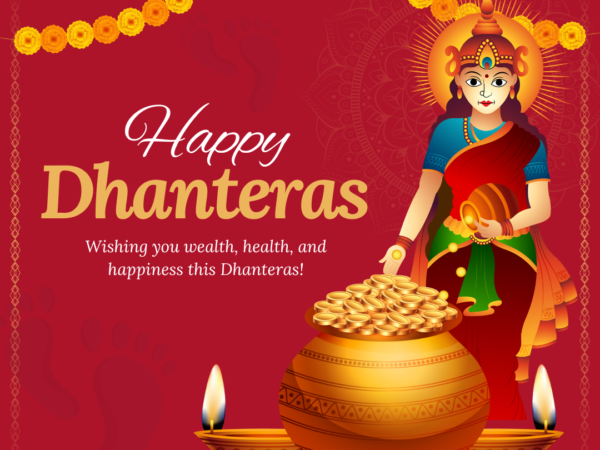[vc_row][vc_column][vc_column_text]Janmashtami is a huge annual Hindu festival that celebrates Lord Krishna’s birth. It is also known as Gokulashtami or Krishna Janmashtami. It falls on the 8th day of the dark fortnight in the month of Bhadrapada as per the Hindu lunisolar calendar. It comes in August or September.
Janmashtami is one of the primary festivals of India, and people around the country celebrate it with great zeal. RozgarKhoj brings you a blog on Janmashtami. We will discuss this festival’s history, importance and other things. So, let’s start with the blog.
[/vc_column_text][/vc_column][/vc_row][vc_row][vc_column][vc_column_text]
History
According to Hindu scriptures, Lord Krishna is Devaki and Vasudeva’s son. He was born in Mathura. He was the eighth son of Devaki and was born to kill his evil uncle Kansa, who had imprisoned his parents. But Krishna was unsafe there, so Vasudeva secretly took Him across the Yamuna River to Vrindavan, where Yashoda and Nanda raised him. Hence, people celebrate Lord Krishna’s birth anniversary on this day. [/vc_column_text][/vc_column][/vc_row][vc_row][vc_column][vc_single_image image=”2726″ img_size=”900*600″][/vc_column][/vc_row][vc_row][vc_column][vc_column_text]
Significance
Janmashtami celebrates the birth of Lord Krishna, whom Hindus worship as the eighth avatar of Lord Vishnu. People believe that Lord Krishna has defeated many demons; thus, this day depicts the winning of good over evil. It is an opportunity for devotees to reflect on his teachings and connect with him. The festival highlights Hindu cultural traditions and values associated with Krishna, such as love, friendship and selfless devotion.
Date and Muhurta
This year, Janmashtami falls on Wednesday, September 6, 2023 (in some places, it is on Thursday, September 7, 2023). The auspicious Ashtami Tithi starts at 3:37 p.m. on September 6 and ends at 4:14 p.m. on September 7.[/vc_column_text][/vc_column][/vc_row][vc_row][vc_column][vc_single_image image=”2729″ img_size=”900*600″][/vc_column][/vc_row][vc_row][vc_column][vc_column_text]
Rituals
Devotees celebrate Janmashtami with great enthusiasm and follow many rituals. Some of them are as follows.
Temple Celebrations
Devotees visit Krishna temples, offer prayers, sing bhajans, and participate in special pujas. Moreover, ISKCON temples host large celebrations.
Fasting
Devotees keep a strict fast on Janmashtami till midnight and read the Bhagavad Gita.
Abhisheka
Devotees bathe the Krishna idols with milk, ghee, honey and other offerings in a ritual cleansing.
Raas Leela
Devotees enact the scenes from Krishna’s life and dance in circles as Krishna did with the Gopis.
Decorate Homes
Devotees clean their houses and decorate them with flowers, rangoli and lights for Janmashtami.
Midnight Puja
At midnight, the exact birth time, offer Puja, and the distribution of Prasad takes place.[/vc_column_text][/vc_column][/vc_row][vc_row][vc_column][vc_column_text]
Celebrations in Different States of India
Mathura, Uttar Pradesh
Mathura is the birthplace of Lord Krishna. Here, people beautifully decorate around 400 Krishna temples on Janmashtami. Festivities include chanting of shlokas, enactment of Raas Leela, fireworks, and Jhulotsava (swing festival). The celebration starts around 10 days before Lord Krishna’s birthday.
Vrindavan, Uttar Pradesh
It is near Mathura, where Lord Krishna spent his formative years. The city eagerly observes Krishna Janmashtami. 10 days before the event, the devotees adorn the temples with fresh flowers and lights.
Gokul, Uttar Pradesh
Gokul is associated with Lord Krishna’s early life as Vasudeva brought Him here after His birth in jail. People celebrate Janmashtami one day after the primary holiday. Worshipers sing hymns, recite mantras, blow shells, ring bells, and decorate their homes with flowers.
Dwarka, Gujarat
Dwarka is considered the home of Lord Krishna, where He spent 5,000 years after leaving Mathura. The town hosts a month-long ‘Janmashtami Utsav’ festival. Temples have Mangal Aarti throughout the city. Dwarka celebrates Janmashtami as Makhan Handi, meaning “an earthen pot filled with butter.” Special celebrations include breaking a butter-filled pot, symbolizing Krishna’s love for butter.
Udupi, Karnataka
In the southern region of India, Udupi celebrates Janmashtami with dance-drama events called Vittal Pindi (Rass Leela). Gopuras (entrance towers) are erected, with Lord Krishna’s idol paraded through the city on a chariot. Also, earthen pots filled with curd (dahi handi) are hung on gopuras and broken during the celebrations.
Imphal, Manipur
Janmashtami witnesses a significant crowd of devotees at Mahabali Temple Shri Govindajee Temple in Manipur. People fast and offer floral tributes to Lord Krishna. Folk dance performances are a prominent part of the festivities.
Mumbai-Pune, Maharashtra
In Maharashtra, the other name of Janmashtami is Dahi-Handi. People compete to break high-hung, earthen pots filled with yoghurt, milk, water, and fruits. Youth form groups known as Govinda Pathaks, building human pyramids to reach and break the pot, mimicking Krishna’s childhood antics.
Puri, Odisha
Puri, famous for the Jagannath Temple, has its unique Janmashtami celebrations.
People observe fast until midnight, considered the hour of Krishna’s birth, chanting “Hare Krishna” and “Hari Bol.” Devotees decorate the temples beautifully, sing religious songs and recite Bhagavad Gita verses.
Assam and Tamil Nadu
These states also celebrate Janmashtami with great enthusiasm, following their unique traditions. Assam and parts of Tamil Nadu join the nationwide festivities with their regional flavours. These celebrations showcase the rich cultural diversity of India, where devotees celebrate Janmashtami with devotion, joy, and various local customs.[/vc_column_text][/vc_column][/vc_row][vc_row][vc_column][vc_single_image image=”2727″ img_size=”900*600″][/vc_column][/vc_row][vc_row][vc_column][vc_column_text]
Celebration on Janmashtami
People celebrate Janmashtami in various ways. Let’s see a glimpse of these.
Preparation and Decorations
Days before Janmashtami, markets buzz with shoppers and shopkeepers bargaining over festive decorations like tinsels, fragrant flowers, lights, and peacock feathers. Devotees prepare their homes with colourful decorations, creating a festive atmosphere. Traditional and devotional songs, including popular Bollywood tracks like “Go Go Go, Govinda,” fill the air.
Food and Sweets Preparation
Preparations for Janmashtami include making Makhan (white butter), Lord Krishna’s favourite. Devotees also create an assortment of delectable prasad (sweet offerings), such as peda, malpua, and panjiri, to be offered during the Puja.
Fasting Tradition
Many devotees observe a fast on Janmashtami, refraining from food and water until the Ashtami Tithi (eighth day) and Rohini Nakshatra (a specific astronomical period) are over the next day. Some opt for a falahaar fast, consuming only fruits and light sattvik (pure) food during this period.
Main Puja at Midnight
The main ritualistic Puja is conducted at midnight, known as Nishita Kal. The Shodashopachara Puja Vidhi, consisting of sixteen steps, is performed with devotion. Devotees engage in bhajans and kirtans dedicated to Lord Krishna throughout the night. Many stay awake for a ratri jagaran, a night vigil, to mark the occasion.
Temple Visits and Home Puja
Devotees can visit temples dedicated to Lord Krishna to offer their prayers. Others prefer to conduct the Puja in their homes, following traditional rituals and reciting holy verses.
Dahi Handi Celebration
Dahi Handi is a spectacle during Janmashtami that reenacts young Krishna as a “Makhanchor” or butter thief. An earthen pot (Handi) has white butter, ghee, dry fruits, and milk. The Handi is then hung at a height from the ground with ropes.
Enthusiastic participants form human pyramids to reach and break the Handi, symbolizing Krishna’s playful act of stealing butter. Dahi Handi competitions are held, with Handis placed at various heights, and winning teams receive substantial prizes in cash or kind.
Ras Leela Performances
In Vrindavan, Lord Krishna’s childhood home, he was known for his playful and mischievous nature. The stories of his mischief and his dances with Radha and the Gopis are collectively known as Ras Leela. On Janmashtami, youngsters prepare skits and dance dramas to portray the tales of Krishna’s Ras Leela. These performances draw large crowds and are cherished occasions for young performers.[/vc_column_text][/vc_column][/vc_row][vc_row][vc_column][vc_column_text]
Conclusion
Janmashtami, a significant Hindu festival, celebrates Lord Krishna’s birth across India. It signifies the victory of good over evil and embodies Krishna’s teachings of love and devotion. Festivities include fasting, midnight puja, temple visits, Dahi Handi, and vibrant Ras Leela performances, uniting India in spiritual celebration. RozgaKhoj wishes everyone a very Happy Janmashtami.[/vc_column_text][/vc_column][/vc_row]




